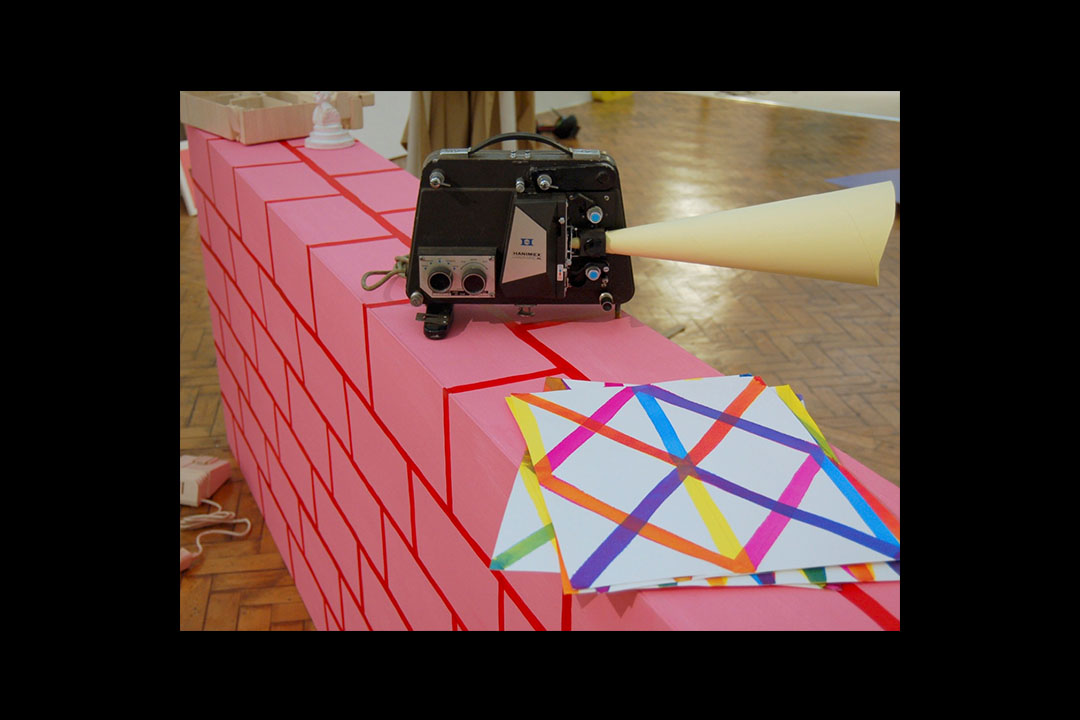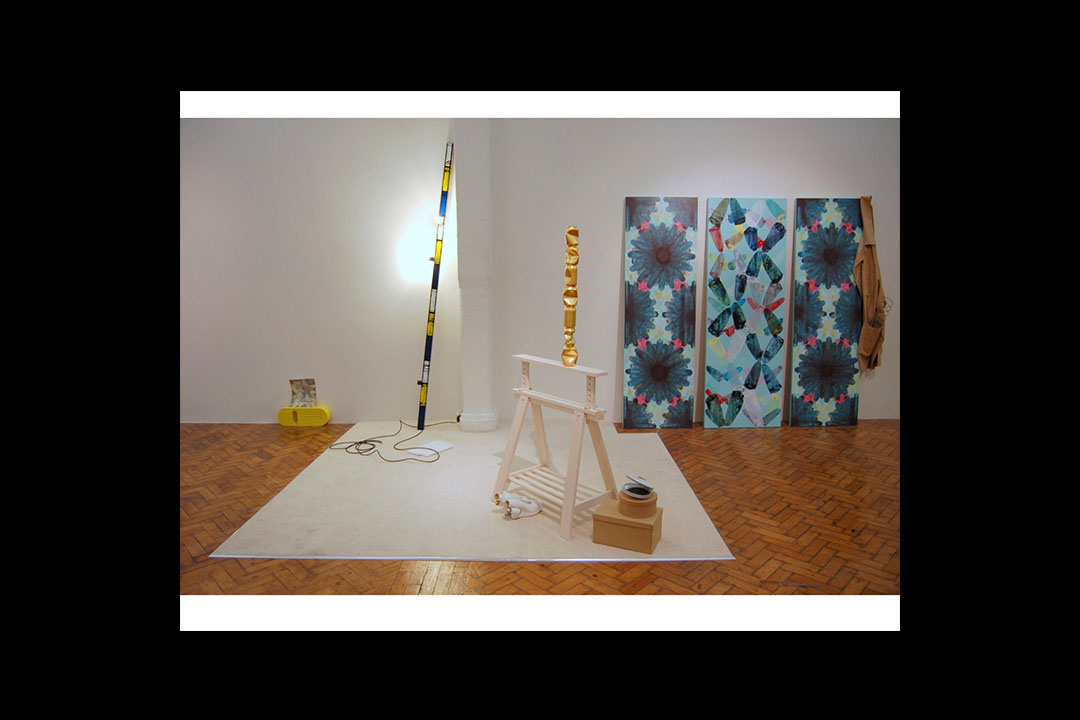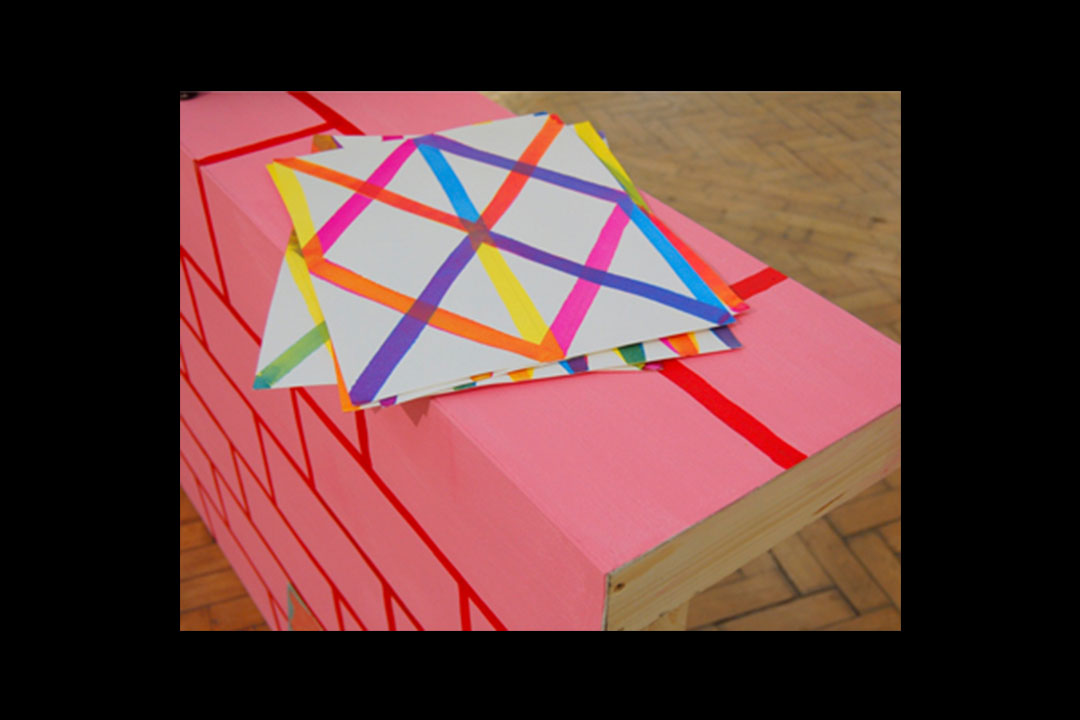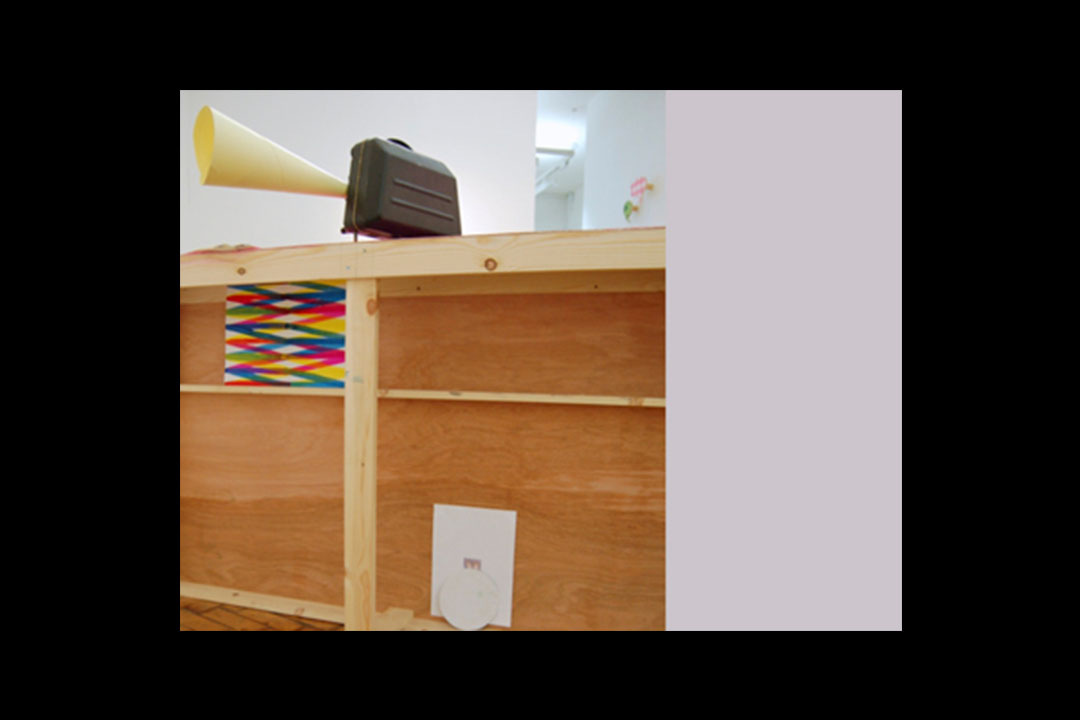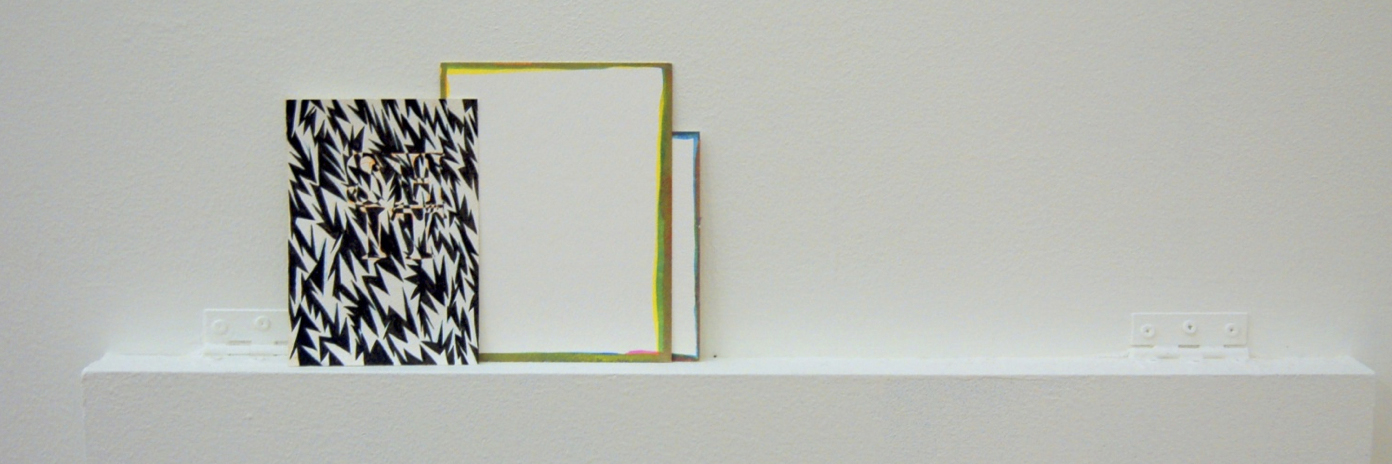Pile
Chapter Arts Centre, Cardiff, 2011, curated by Craig Fisher.
Simmond’s work exhibited in ‘Pile’, a comprehensive sculpture show that questioned the conventions of group exhibitions, explores the relation between pattern and decoration and formalist abstraction, questioning if painting can establish a visual pulse, and enabling a re-interpretation of a previous painting and a body of new paintings/drawings. Questions of how painting’s autonomy can be examined through display and proximity to the work of others were explored in the siting of the work entitled ‘Mother-in-law's tongue’, connecting floor and wall, addressing the boundary between painting and sculpture. Ideas of hierarchy of fine art over decorative arts were challenged when this painting was used as a device on which to hang the work of another artist, risking the possibility of the work being seen as a mere decorative prop. Previous work using repetition and difference as a means to invoke a visual pulse in painting was re-visited in a new body of paintings on paper, continuing investigations of relations between internal mark making, made in relation to frame, size and scale, and parameters of substrate – be it a domestic door or pre-ordered pack of paper.
The work restricts colour to its constitute subtractive primaries (magenta, yellow and cyan), which then enabled the exploration of a set of permutations and combinations. The resulting paintings are constructed through a repetitive process, opening up a visual space to engage the viewer with the rhythm and craft of production. The rhythm evokes a hypnotic quality, making the work seem more alive than the methodical nature of production would suggest. This slippage between a systematic abstraction and pattern suggests an in-between space, uncertain and open to interpretation. The theme has been further explored in: ‘Trick of Light’, a group exhibition at Primo Alonso Gallery, London, 2010, curated by Juan Bolivar, and in a chapbook, Transmission: Friend (in the series of chapbooks published by Artwords Press, London), a visual and textual dialogue with the artist Jane Harris, from which the saturated works above developed from the drawings produced for the book.
